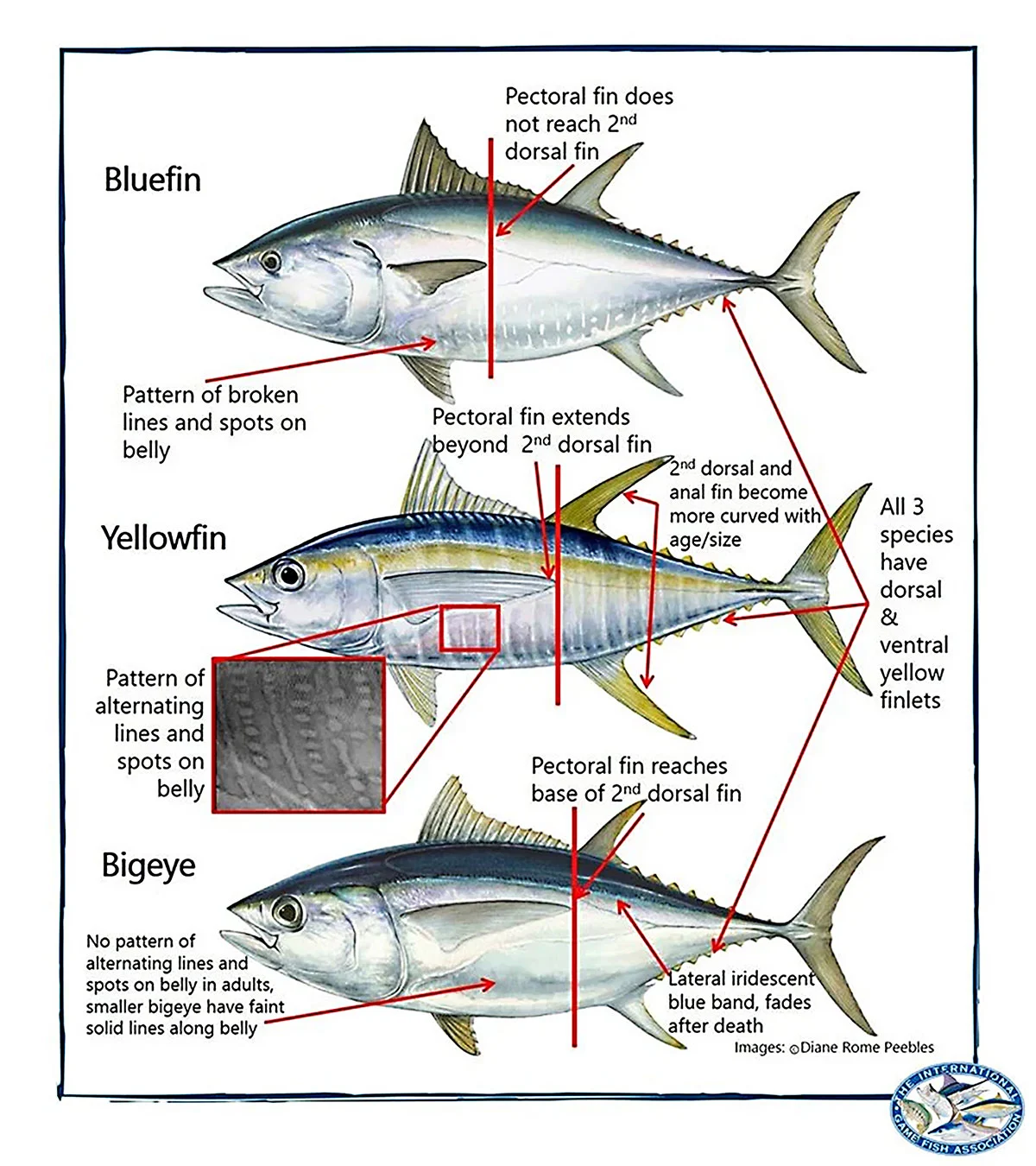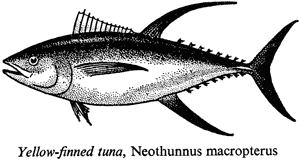Classification of Tuna and Bill fish species that are most consumed in market, Ahi tuna and Broadbill Swordfish Belly


Origins of the word Tuna
The word “tuna” derived from the Spanish term “atun” that means “in a hurry” or a “rush”. This may refer to the swimming speed of the tuna or its short life span when taken out of the water as it dies very quickly.
The flesh of tuna is a delicacy and has a similar texture to meat of land animals and poultry.


Why do tuna taste like meat – Tuna are endothermic animals
The taste of tuna is different from other fish species especially because it is a homothermal animal(warm blooded animal) which means it can regulate its own temperature(endothermic).
This is one of the main reasons tuna taste different from fish and resemble other animal meat. Also because tuna are endothermic, it is highly difficult for storage and shelf-life maintenance that make quality tuna highly expensive.




Ordering tuna in East Asia – Tuna and bill fishes
The East Asia countries are especially high in demand of tuna and tuna species are strictly classified and divided in East Asia per their grade and species and various menus are developed.
When ordering tuna in East Asia, the menu include tunas from the true tuna family and the bill fish family that include marlin, sword fishes.
Skipjack tunas that aren’t true tunas are also a delicacy and it is the main ingredient of the famous katsuobushi.



Bill Fish Species in East Asia Tuna restaurants
Many tuna restaurants in East Asia usually serve bill fish species also alongside tuna and sometimes the bill fish are included in tuna(at least in South Korea for sure).
Bill fish are called 새치(saechi)in Korean while in Japanese they are called Kajiki(剣魚)/ The marlins, spear fish, swordfish, bill fish, sailfish are all included in the bill fish species consumed.




Bill fish all generally have a light meaty flavor without much fat except for the belly of certain species.
The general species consumed are White marlin(シロカジキ, 백 새치), Black marlin(シロカジキ, 흑새치), Sailfish(バショウカジキ, 돛새치), Striped marlin(청새치, マカジキ) and the Swordfish(broadbill swordfish, 황새치 メカジキ)


Value of Bill fish species in East Asia Tuna restaurants
Bill fish is also definitely a delicacy and many tuna restaurants would serve the bill fish on their menus. However except for the belly of the broadbill sword fish, most meat of the bill fish are very lean and not oily.
In South Korea, the broadbill sword fish belly is called a メカトロ, mekadoro(meaktoro) 메카도로 and is considered the highest value among the bill fish meat.




Although the term mekadoro derived from Japanese after the mekajiki(broadbill swordfish), in Japan the term toro(doro) トロ that means belly is only used for describing tuna.
For South Korea where the oily parts of fish are considered high value, the value of the broadbill sword fish is the highest followed by the striped marlin.




The rest of the bill fish species are considered the same.
The Mekajiki or the broadbill swordfish is also considered the highest value among the bill fish because the meat is most tender and it has a standout flavor that makes sushi and sashimi that stand out compared with the other billfish that taste a bit similar.




Characteristics and Color of the Broadbill Swordfish Belly – Mekatoro
The meat and flesh of the billfish species are usually white and very lean with low oil content(It may depend on their diet though). However the belly of the broadbill sword fish have a higher oil content compared with other bill fish species.
The broadbill sword fish belly has distinctive red spot like features that make it stand out. Some broadbill sword fish bellies have a pinkish red color where some claim that the red broadbill sword fish belly taste better.




Possibly some broadbill swordfish may have fed more on crustaceans(crabs etc) and have a higher Astaxanthin red pigment content that cause the red color of their belly.
Some claim that broadbill sword fish eat krill that cause this color but broadbill sword fish are unlikely to consume krill nor do they have an adequate filtering structure to consume krill. (Krill feeding animals have similar characteristics where they build a red color due to the Astaxanthin in the krill)




Classification of Tuna species
By the recent taxonomy classification, the “true tuna” tribe is referred as the Thunnus genus.
The Thunnus genus comprises of two subgenera the Thunnus (bluefin group) and the Neothunnus(yellowfin group). Although it may sound confusing, however all tuna have a yellowish and blue colored feature.

Thunnus Genus – Bluefin tuna group
There are five species included in the Thunnus Genus of tuna. The albacore tuna, Southern Bluefin Tuna, Bigeye Tuna, Pacific Bluefin Tuna and the Atlantic Bluefin Tuna consist of the bluefin tuna group. Bigeye Tuna and the albacore tuna are also very delicious tuna species.


However the bluefin tuna including the Atlantic Bluefin Tuna, Pacific Bluefin Tuna and the Southern Bluefin Tuna are the “real tuna” or the “genuine tuna” hon-maguro (本鮪) in Japanese that is the true king of the tunas and most expensive tuna in sushi and sashimi.

Bluefin Tuna – Honmaguro
In the East Asia market, the honmaguro (本鮪) or the blue fin tunas are called the “real tuna” and these species are the highest valued tuna for consumption.
There are three species of the blue fin tuna, the Pacific bluefin tuna, Atlantic bluefin tuna and the Southern bluefin tuna.


The Southern bluefin tuna earned its name as it lives in the Southern hemisphere while the Pacific bluefin tuna and the Atlantic bluefin tuna live in the Northern hemisphere.
The Pacific bluefin tuna, of course lives in the Pacific Ocean and the Atlantic bluefin tuna lives in the Atlantic Ocean that gave them their names.




Neothunnus – Yellowfin tuna group
The blackfin tuna, longtail tuna and the yellowfin tuna form the neothunnus, yellowfin tuna group. The yellowfin and the bluefin term isn’t necessarily the major differences between the bluefin and yellowfin group and all tuna have yellow and blue color features.




What is an Ahi Tuna – tuna species of Ahi Tuna
The term Ahi Tuna is used in American countries to describe certain tuna species. The term ‘Ahi’ derives from Hawaii that means “fire”.
Ahi tuna earned their name as ‘fire tuna’ because the fishermen of Hawaii had to wrestle and struggle with fishing lines when these tuna were caught that literally caused so much friction and made smoke on the fishing lines.
The Ahi tuna refer to the yellowfin tuna and the big eye tuna as they dwell in the waters of Hawaii.



